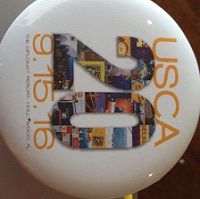Article
HIV: Pre-Exposure Prophylaxis Can also Start Post-Exposure, Clinic Reports
Author(s):
Can Pre-Exposure Prophylaxis for HIV be given post-exposure? Absolutely, a New York City team reports.

One of the challenges in getting at-risk patients to use pharmaceutical pre-exposure prophylaxis (PrEP) can be that they may wait until after they have been exposed to HIV to seek treatment.
But that doesn't have to be a barrier to taking pre-exposure antivirals.
Reporting at the 20th Annual United States Conference on AIDS in Hollywood, FL, a team from New York City’s Callen-Lorde Community Health Center said they have been successful in transition people from post-exposure prophylaxis (PEP) treatment to PrEP.
The non-profit’s clients are predominately LGBT.
Staff has been providing PEP since 2006 but after state and federal guidelines on PrEP were release in 2012, it started a program, and now has about 1,400 clients on PrEP.
In 2015, the clinic saw 881 clients who sought and received post-exposure treatment.
Within a month about 30% transitioned to PrEP and the rest transitioned a month later.
“PEP is largely considered an entry point for PrEP,” the team said in a poster presentation at the conference.
Their tactics included having a staff responsible for PrEP, readily available help navigating insurance coverage, a telephone hotline, posters in public spaces and all exam rooms, and a protocol at the clinic that mandate PrEP discusses with all clients who came in post-exposure.
Setting up such a program requires adequate funding for insurance navigators, multidisciplinary teams of providers, social workers and HIV counselors, and timely follow up appointments.
Assessments for acute HIV and viral load testing are also essential.
A measure of the program’s success has been that 34% of PrEP prescriptions were for patients who started as PEP patients, the team noted.
Over 70% of the patients were gay men, about two thirds of them white.
Team members included three physicians, Uri Belkind, MD; Peter Meacher, MD; and Asa Radix, MD, MPH.





